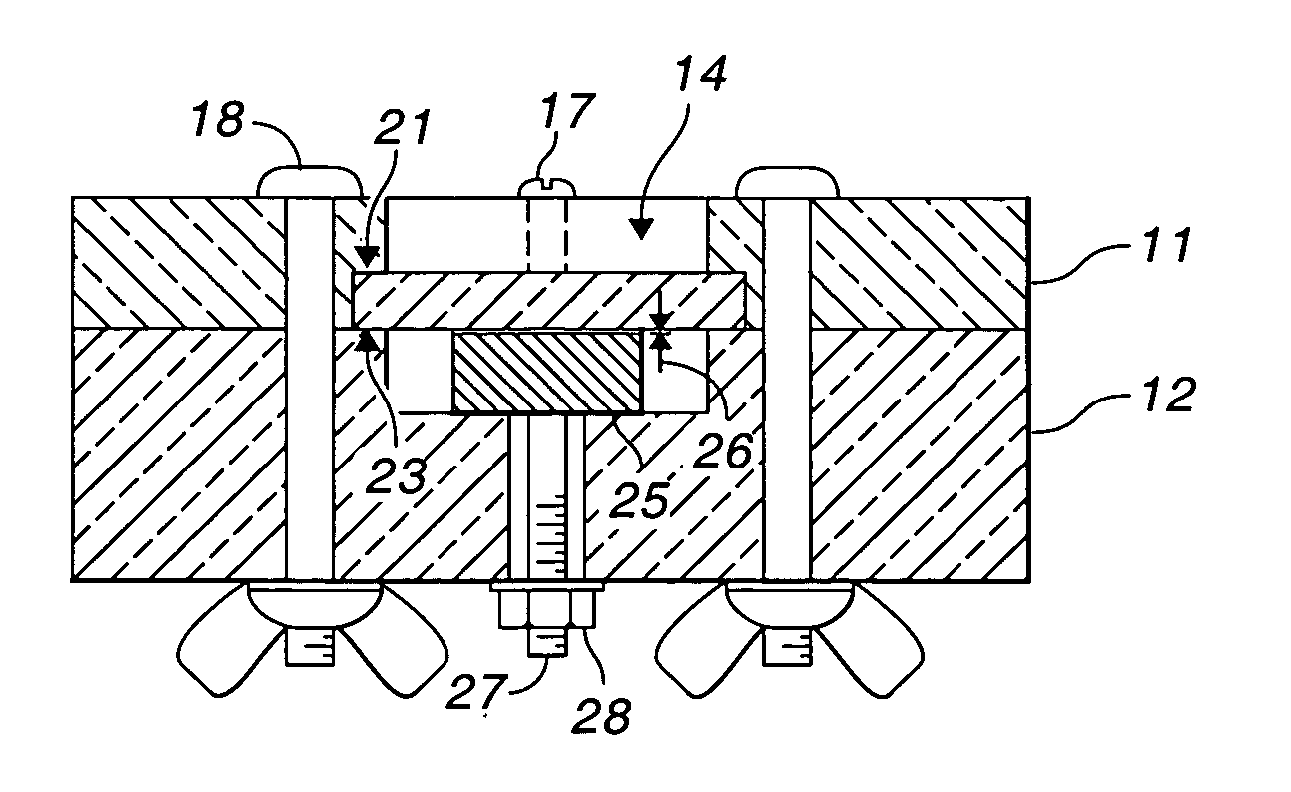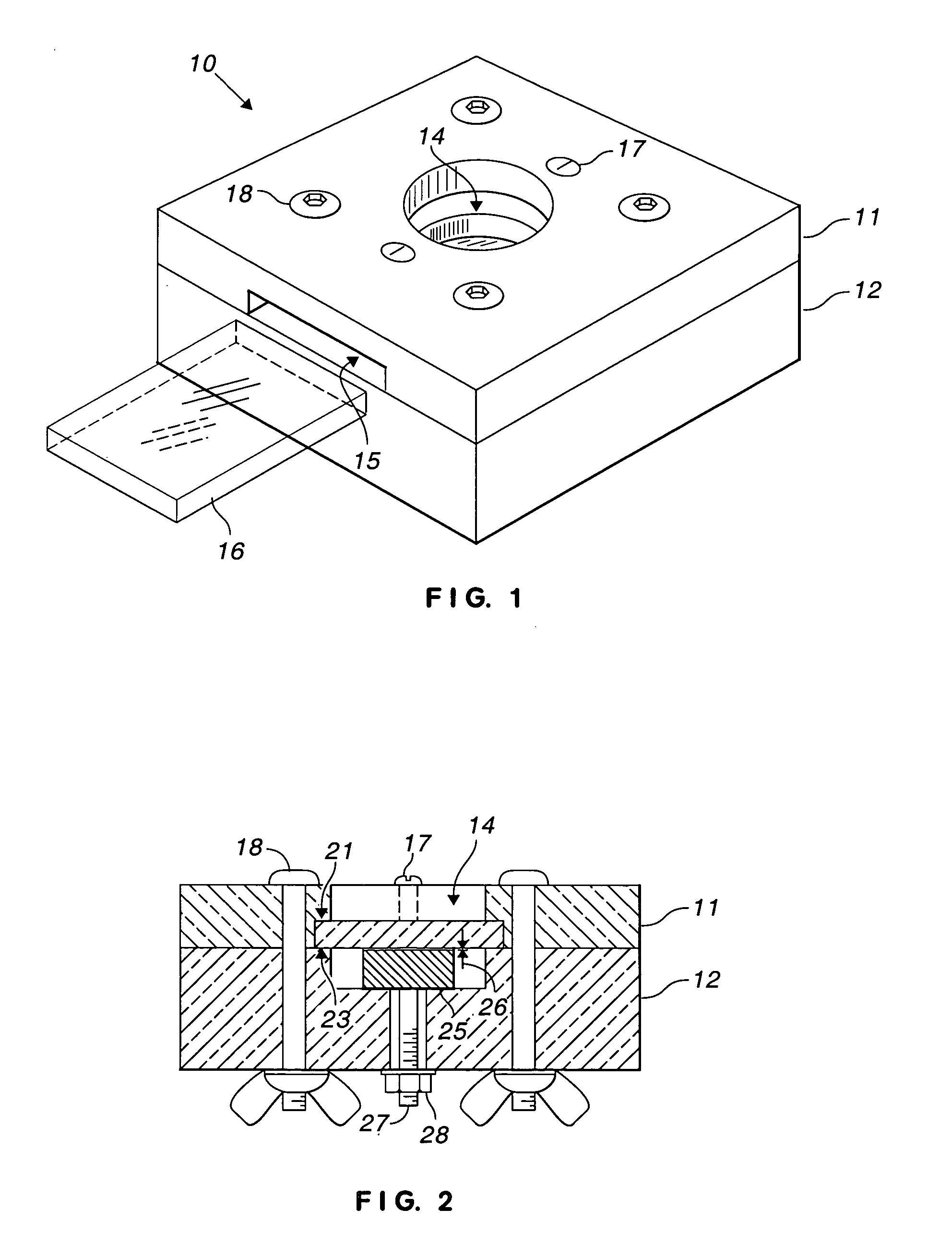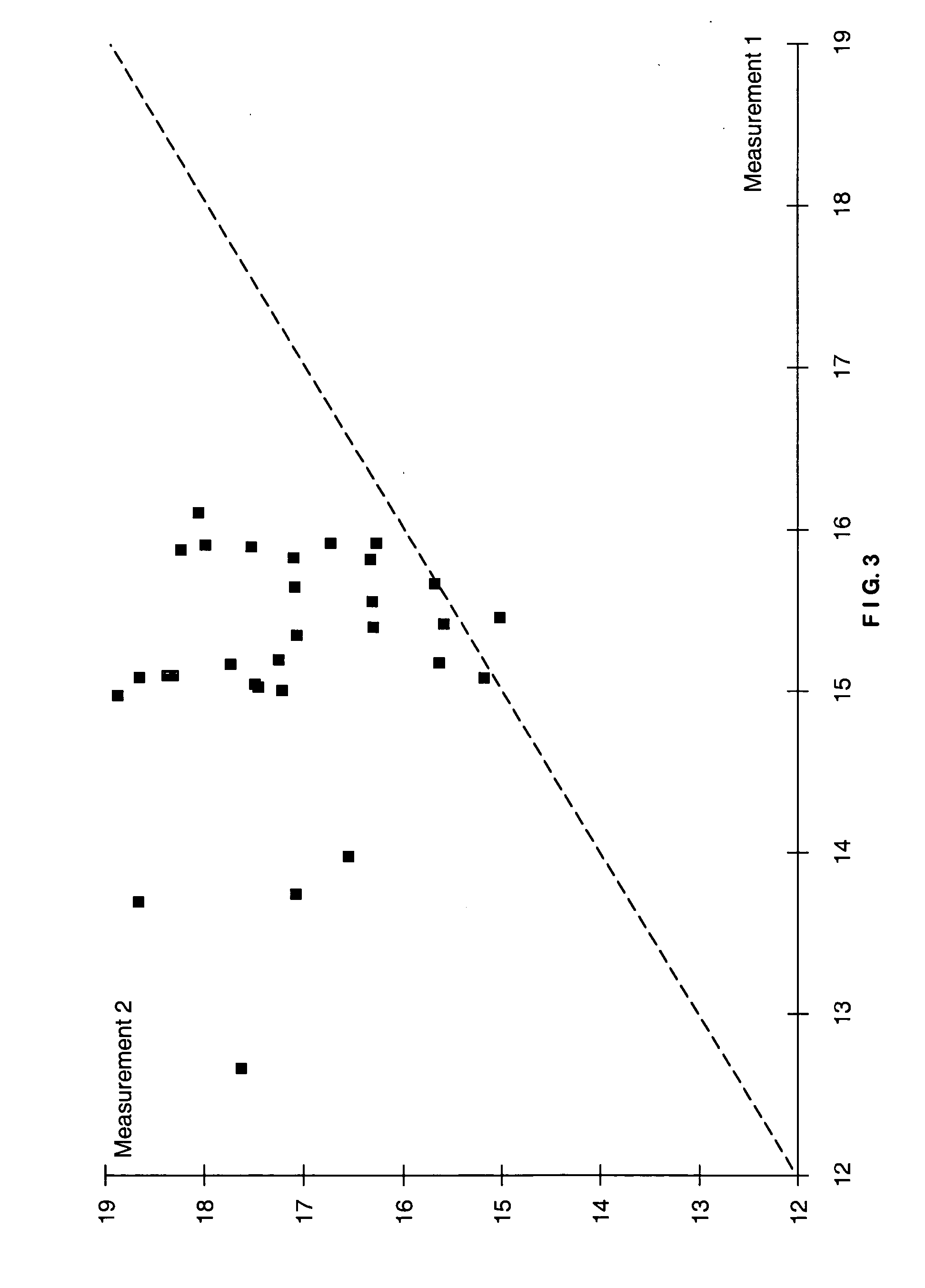Test cell for evaluating phosphor
a test cell and phosphorescence technology, applied in the field of phosphor testing methods and apparatuses, can solve the problems of virtually impossible life testing, inability to perform plurality of test on a sample, and inability to reliably and accurately measure luminance, so as to eliminate air/dielectric interfaces and improve optical coupling
- Summary
- Abstract
- Description
- Claims
- Application Information
AI Technical Summary
Benefits of technology
Problems solved by technology
Method used
Image
Examples
Embodiment Construction
[0022]FIG. 1 is a perspective view of an oil cell constructed in accordance with a preferred embodiment of the invention. Cell 10 includes top plate 11 made from a suitable plastic such as Plexiglass® acrylate (poly(methyl methacrylate)) or Delrin® acetal resin. Bottom plate 12 is preferably made, from Macor® machinable glass ceramic. Other dimensionally stable, rigid materials could be used instead for either plate. The two plates define central cavity 14 wherein samples are made and tests are performed.
[0023] Window 15 is located in one side of top plate 11 and extends to cavity 14. Glass slide 16 fits within window 15 and is inserted into the cell to intersect cavity 14, approximately bisecting the cavity and closing off the upper portion of the cavity. Within cell 10, slide 16 is held in place by set screws, such as set screw 17, which is preferably made from nylon to avoid cracking slide 16. Top plate 11 is fastened to bottom plate 12 by bolts, such as bolt 18.
[0024]FIG. 2 is...
PUM
| Property | Measurement | Unit |
|---|---|---|
| frequency | aaaaa | aaaaa |
| thickness | aaaaa | aaaaa |
| luminance | aaaaa | aaaaa |
Abstract
Description
Claims
Application Information
 Login to View More
Login to View More - R&D
- Intellectual Property
- Life Sciences
- Materials
- Tech Scout
- Unparalleled Data Quality
- Higher Quality Content
- 60% Fewer Hallucinations
Browse by: Latest US Patents, China's latest patents, Technical Efficacy Thesaurus, Application Domain, Technology Topic, Popular Technical Reports.
© 2025 PatSnap. All rights reserved.Legal|Privacy policy|Modern Slavery Act Transparency Statement|Sitemap|About US| Contact US: help@patsnap.com



